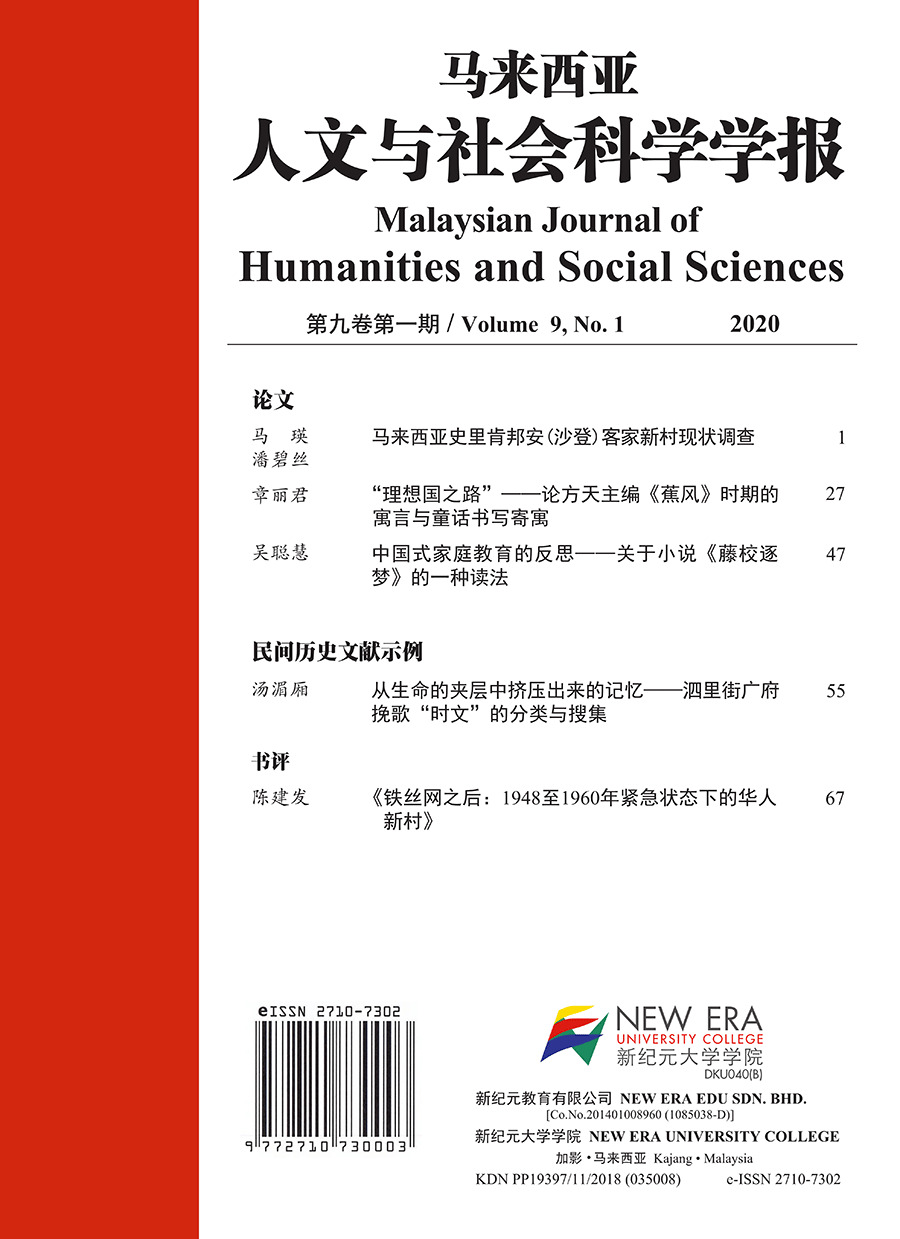从生命的夹层中挤压出来的记忆—泗里街广府挽歌“时文”的分类与搜集 Almost Forgotten Memory—The Collection and Categorization of Guangfu Funeral Dirge in Sarikei
Keywords:
丧葬、挽歌、时文、哭者, funeral, dirge, shiwen, song book, crierAbstract
砂拉越泗里街广府新会三江入的挽歌称为“时文”,是随着当年的中国移民流传到泗里街。“时文“有两种类型,即紧密配合丧葬仪式而歌;不紧密配合丧葬仪式而歌。根据内容来看, ”时文“有五种样式,即“散锦”“散文“”字眼”“好话”“古人”,各具特色,既可单独而歌,也能互相搭配,反映了它高度的灵活性、包容性。这些时文是口耳相传的口头文学,也是“哭时文“哭者的歌本。哭者凭借记忆把歌词背下来,经过数十年的洗礼,出口依然能歌。笔者在搜集”时文”方面花了很多时间与精力,在笔录方面也力求精确,多方考究,以求达到方言词与汉语词汇相对应的要求。
The dirge of the Guangfu Xinhui (Sanjiang) in Sarikei, Sarawak, is called "Shiwen", and it was brought along by the Chinese immigrants to Sarikei. There are two types of "Shiwen ", — songs associated closely with funeral ceremonies and songs not associated with funeral ceremonies. Based on the context, "Shiwen" can be categorised into five styles, namely sanjin, sanwen, ziyan, haohua and guren. Each category has its own unique characteristics and can be performed in standalone mode or along with others, hence reflecting the high flexibility and inclusiveness of "Shiwen". "Shiwen" is an oral literature that has been transmitted by word of mouth, and it also serves as the song book of the criers of "kushiwen". The criers recite the lyrics by heart retentively, though vague at times. Tremendous time and effort have been put into the collection of "Shiwen" by the author. On top of that, the author strives for accuracy in transcribing and translating the "Shiwen" in order to achieve the corresponding requirements of Guangfu dialect and Han Chinese vocabulary.




